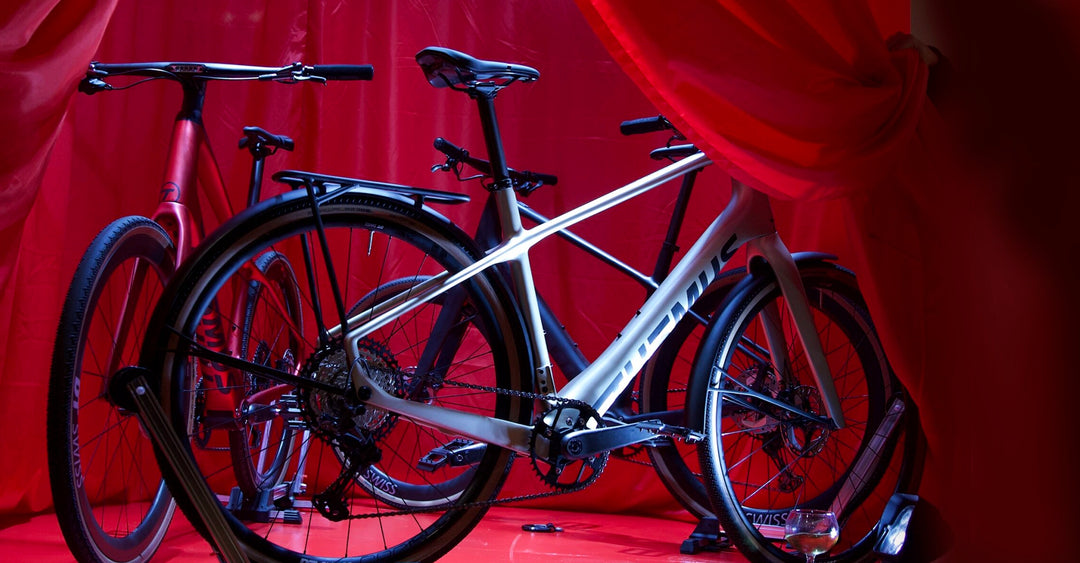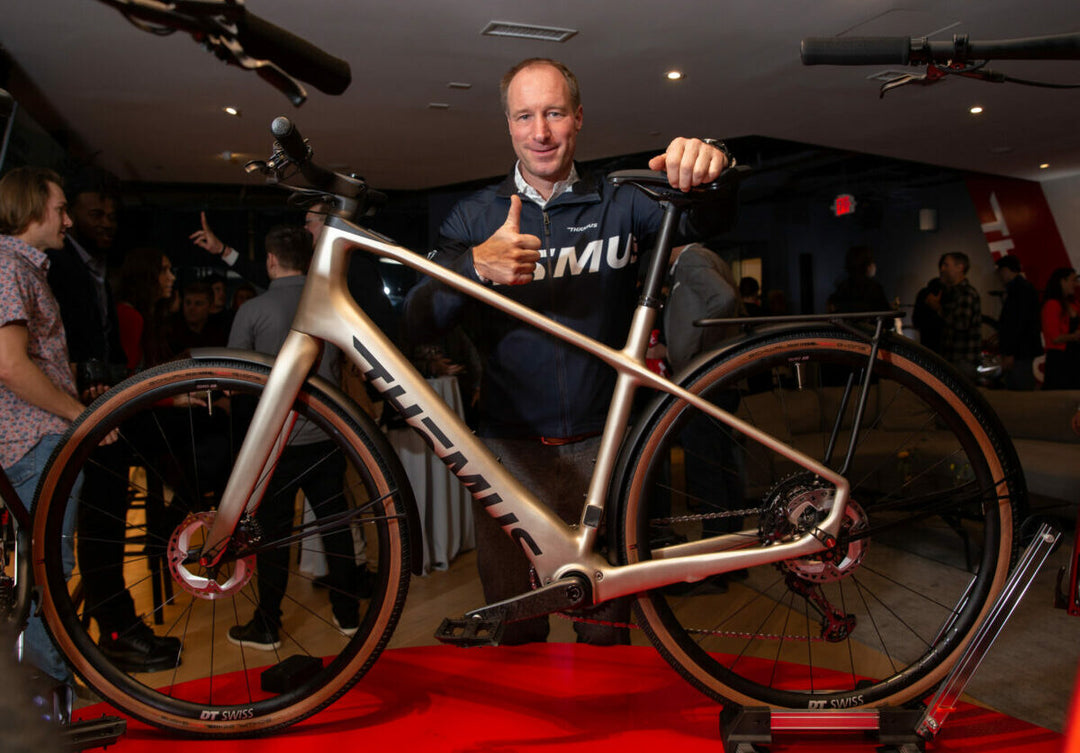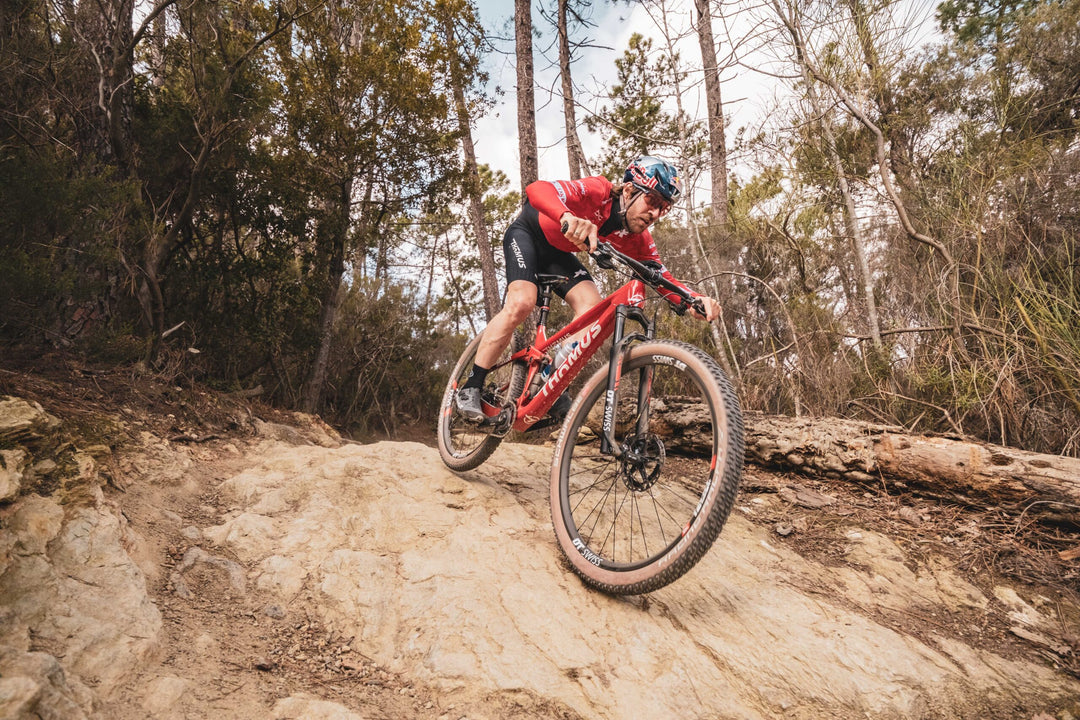WORLD CUP - PROVEN SPEED
SOURCE: MOUNTAIN BIKE ACTION MAGAZINE - OCT 01, 2023
SWISS PRECISION ON AND OFF THE RACECOURSE
Our first introduction to Swiss brand Thömus was when it became the sponsor of the Thömus Maxon Swiss mountain bike racing team. Before that, we knew little about the Swiss bike brand that got its humble beginnings in Thomas Binggeli’s parents’ barn in 1991, when Thomas, 17, started his own bike shop, which turned into Thömus Bicycles in 1998. The team includes riders such as Matthias Flukinger, Alessandra Keller and Lars Forster, who won this year’s XCO World Cup race at Leogang. The bike that they have been racing on, the Lightrider Worldcup, has been exotic unobtainium here in North America. Then, in late 2022, a Thömus concept store opened in Santa Monica, California, offering distribution in the U.S. and a chance for us to get our hands on one. After seeing the bike’s performance on the world stage, the MBA wrecking crew was eager to see what the Lightrider Worldcup was all about. It is offered in two different travel options—100mm and 110mm—and we tested the latter of the two.
FRAME
The Lightrider Worldcup features a full-carbon frame with a claimed weight of 3.6 pounds (1.65 kilograms) in a size medium with shock and hardware. It has a press-fit bottom bracket and internally routed cables that exit the front of the frame through
the headset. There is a single water-bottle cage mount located on the downtube. Geometry on our 110mm-travel model includes a 68.7-degree head angle, 73.5-degree seat tube angle and 470mm reach. The 100mm-travel version is steeper with a 69.2-degree head angle and 74-degree seat tube angle.
COMPONENTS
Thömus offers the Lightrider Worldcup in three complete models with custom upgrades available at the time of order via the bike builder on its international website. In the USA, each bike is custom built to order with prices starting at $7,000. Our test bike costs $7,742 and features a Shimano XT drivetrain and brakes, along with 2.4-inch-wide Schwalbe Nobby Nic tires mounted to DT Swiss XM1700 wheels. Its cockpit has a lot of carbon in it, consisting of a 150mm-travel KS LEV-Ci carbon dropper post and Selle Italia Boost Carbon Superflow saddle. A Thömus-branded carbon riser bar is mated to a Thömus Integrated V2 stem and ESI Chunky silicone grips—a long-time MBA wrecking crew favorite on cross-country bikes.
SUSPENSION
Like many cross-country race bike suspension designs these days, Thömus uses what it calls a four-bar design with flex stays instead of a pivot near the dropouts like a traditional four-bar design. This eliminated pivot saves weight and could,
in theory, add stiffness. While some designs feature a flattened zone where this bending is supposed to take place, there is no such thing on this bike, making us think that the flex is most likely taking place on the smaller-diameter seatstay portion of the swingarm.
This system is paired to a Fox DPS shock with one or two stroke lengths to achieve 100mm or 110mm of travel. Up front, our 110mm-travel test bike is paired to a 130mm Fox 34 fork. The 100mm-travel version comes with a 10mm fork. Both the shock and fork are tied to a remote lockout switch located on the left side of the handlebars. The shock’s remote cable exits at the base of the downtube and straight to the shock for a pretty clean look.
CLIMBING
It came as little surprise to test riders when they found that the Lightrider Worldcup flies up climbs. Even with the longer-travel suspension, it lunges forward with each pedal stroke. The frame feels very stiff even under the biggest efforts, seemingly turning each watt of output into forward motion without frame flex or excessive rear-suspension movement. The rear suspension is crisp and firm with a linear-feeling stroke that pedals well. The lockout was reserved for ultra-smooth trail and pavement sections.
Even though the seat tube angle is on the slack side by modern- day standards, riders still felt they were generally in a powerful pedaling position on the bike. Some wanted a more aggressive, lower front end, but cables passing through the headset spacer seriously complicated matters. As fast as it is, this acceleration was held back by what most would consider trail- spec’d wheels and tires. While these parts are durable and perform well for general trail riding, they are heavy for a cross-country bike and not what we would want to race on. Most riders would use these as training wheels and slap on their lightweight race hoops mounted with faster-rolling and lighter tread.
DESCENDING
Handling is sharp, but far from what most would consider demanding on the descents. In fact, test riders raved about the bike’s ability to navigate tricky terrain with composure. It allowed for aggression and more of an attacking style of riding that occasionally overlapped into what many would consider trail bike territory. This is particularly impressive given how well it climbs. That frame stiffness that riders felt under hard efforts also helps this bike stay predictable on tough descents. It walks that fine line between rigid precision and forgiving compliance that predictably keeps it going where we wanted it to.
Suspension-wise, the Thömus keeps its composure well in the rough, but riders can’t simply lean back and let the bike plow like a longer-travel trail-focused model. Careful line selection and remembering that you’re on a shorter-travel cross-country bike is key to getting the most on descents. Compared to other bikes with actual pivots, the Lightrider Worldcup might give up a small fraction of nuanced rear-suspension suppleness, but it’s unlikely that most riders will even notice unless they’re ridden back to back. Fox’s 34 fork continues to impress us with its action and steering precision.
WHAT DID WE LOVE?
As good as this bike rides, our favorite thing about this bike is
the exotic aura it gives off. Don’t expect to be ignored out on the trail. Everywhere we went, people looked in awe at the Ferrari-red speedster.
WHAT DID WE HATE?
We hate to sound like a broken record, but we are still not
fans of headset cable routing. On this bike, the cables even went through a headset spacer. Test riders wanting to lower their bars were left shaking their heads at the complexity of what is normally a simple task on other bikes.
BOTTOM LINE
We were really excited to ride the Lightrider Worldcup, and it certainly didn’t disappoint. It has the kind of speed that makes you leave it all out on the trail without compromising downhill capability or fun on the way down. It’s the epitome of the modern cross- country race bike that’s designed to excel on the increasingly challenging international racecourses. This also makes it a great daily ride, especially in this trail-friendly build configuration. Whether you are charging at the front of the Wednesday-evening group ride or chasing the top step of a World Cup podium, the Thömus Lightrider Worldcup is as capable as anything we’ve ridden. It’s a rarity here in North America, giving it the X factor that adds to the whole package. But, something tells us it may not be an uncommon sight here for long.



